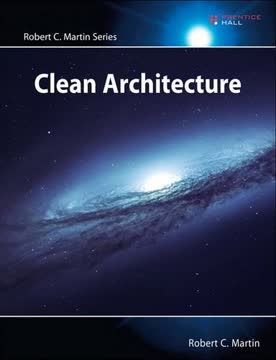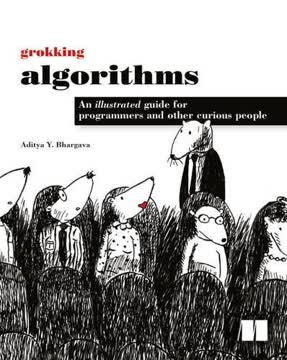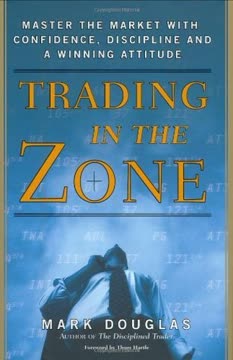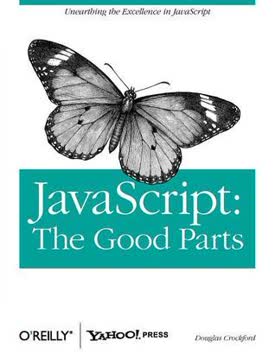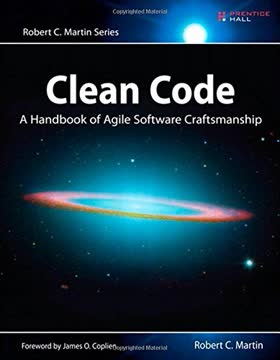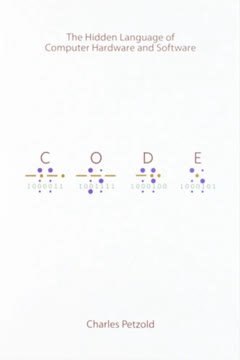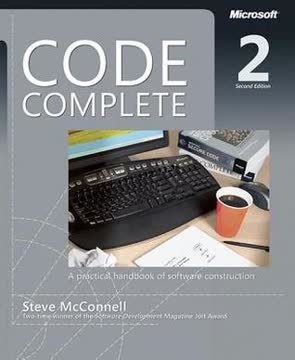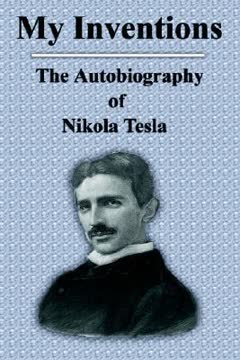重点摘要
1. 计算机科学:高效解决问题的基石
计算机科学无处不在,但教学内容仍然枯燥乏味。
实践应用。 计算机科学不仅仅是抽象理论,它是现实世界中高效编程和解决问题的关键基础。许多程序员缺乏系统的计算机科学训练,导致解决方案效率低下。本书旨在以精炼且易懂的方式弥补这一差距,帮助读者掌握核心概念。
计算思维。 计算机科学的核心是计算思维,即将问题拆解为可计算的系统。这种思维不仅限于编程,也适用于日常生活,比如优化打包流程或通过并行处理加快烹饪速度。
强大算力,稀缺技能。 计算能力唾手可得,但高效利用它的能力却十分稀缺。掌握计算机科学原理,能让你充分释放机器潜力,创造创新且高效的复杂问题解决方案。
2. 逻辑:计算思维的根基
程序员天天与逻辑打交道,甚至会被搞得头脑混乱。
形式逻辑。 逻辑是计算机科学的基础,帮助程序员有条不紊地解决问题。形式逻辑提供了推理框架,利用与(AND)、或(OR)、非(NOT)及条件语句等运算符,判断陈述和关系的有效性。
布尔代数。 布尔代数简化逻辑表达式,类似初等代数简化数字表达式。德摩根定律允许将与转换为或,反之亦然,帮助简化复杂逻辑模型。
真值表。 真值表通过列举所有变量可能的组合,系统地分析逻辑模型。构建真值表能确定系统在何种条件下正常工作,如“脆弱系统”示例所示。
3. 计数:掌握枚举的艺术
正确计数至关重要,处理计算问题时你会反复用到。
组合分析。 计数技巧包括乘法原理、排列、组合和求和,是解决计算问题的必备工具。它们帮助我们确定可能结果或配置的数量,评估算法的可行性。
阶乘与排列。 阶乘函数(n!)计算n个元素的排列总数。排列考虑顺序,用于计算从n个元素中选出m个的不同排列方式。
组合与求和。 组合(记作“n选m”)计算从n个元素中选出m个且不考虑顺序的方式数。求和用西格玛(Σ)符号表示,用于计算连续事件的总可能数,如“廉价飞行”示例所示。
4. 概率:驾驭随机世界
随机原理助你理解赌博、天气预报,或设计低风险备份系统。
概率计算。 概率原理量化事件发生的可能性,支持各种场景下的理性决策。事件概率等于该事件发生的方式数除以所有可能结果的总数。
独立事件与互斥事件。 独立事件的结果互不影响,其联合概率为各自概率的乘积。互斥事件不能同时发生,其联合概率为各自概率之和。
互补事件与赌徒谬误。 互补事件涵盖所有可能结果,其概率和为100%。必须避免赌徒谬误,即错误地认为过去事件会影响独立事件的结果。
5. 复杂度分析:衡量算法效率
几乎所有计算都存在多种过程安排方式。
时间复杂度。 时间复杂度用T(n)表示算法处理规模为n的输入时所需的操作次数。分析时间复杂度有助于预测输入规模增长时执行时间的变化。
大O符号。 大O符号描述算法在最坏情况下的主导成本项,提供统一的时间复杂度表示。对于大规模输入,复杂度较低的算法(如O(n log n))通常优于复杂度较高的算法(如O(n²))。
指数算法。 指数时间算法(如O(2^n))增长极快,被视为“不可运行”,不适合大规模问题,除非问题规模极小。
6. 算法设计策略:解决问题的工具箱
找到一个好方法后,继续寻找更优解。
迭代与递归。 迭代通过循环重复执行过程直到满足条件,递归则是函数调用自身的副本完成任务。递归算法通常更简洁,但可能带来计算开销。
暴力法与回溯法。 暴力法通过穷举所有可能解来解决问题,回溯法则通过尝试并撤销错误选择优化搜索。回溯法适用于选择限制后续选择的场景。
启发式与分治法。 启发式方法以牺牲最优性换取速度,分治法将问题拆解为更小的子问题。动态规划通过识别并缓存重复子问题避免冗余计算。
7. 数据结构:优化信息组织与访问
优秀程序员关注数据结构及其关系。
抽象数据类型(ADT)。 ADT定义了一组操作,隐藏实现细节,促进代码复用。常见ADT包括栈、队列、列表、映射和集合。
数组与链表。 数组在连续内存中存储元素,访问速度快但灵活性有限。链表通过指针连接节点,便于插入和删除,但访问速度较慢。
树与哈希表。 树结构层级组织数据,二叉搜索树支持高效查找。哈希表利用哈希函数映射数据到内存位置,实现O(1)访问,但需妥善处理冲突。
8. 算法:借助现成方案
编程不仅经济科学,还能带来如诗歌音乐般的美感体验。
排序算法。 排序算法将数据按特定顺序排列,简单算法如选择排序和插入排序为O(n²),高效算法如归并排序和快速排序为O(n log n)。插入排序对近乎有序数据特别高效。
搜索算法。 搜索算法定位内存中特定信息,顺序搜索为O(n),二分搜索对有序数据为O(log n)。哈希表搜索时间为O(1)。
图算法。 图算法处理节点和边组成的数据结构,深度优先搜索(DFS)和广度优先搜索(BFS)分别以不同方式遍历图。迪杰斯特拉算法用于寻找节点间最短路径。
9. 数据库:管理海量数据
虽以数据库工作闻名,我的根本技能是架构师:分析需求,构建简洁优雅的解决方案。
关系型数据库。 关系型数据库将数据组织成行列表格,利用主键和外键建立关联。SQL是关系型数据库的标准查询语言。
非关系型数据库(NoSQL)。 非关系型数据库摒弃表格关系和固定模式,提供更大灵活性。文档存储、键值存储和图数据库是NoSQL的典型代表。
分布式数据库。 分布式数据库协调多台计算机处理大规模数据、高查询负载或关键应用。技术包括单主复制、多主复制和分片。
10. 计算机体系结构:揭示内部运作
任何足够先进的技术都与魔法无异。
处理器与内存。 计算机由处理器(CPU)和内存(RAM)组成。内存存储指令和数据,处理器负责取指令和执行计算。
CPU操作。 CPU执行简单数学运算,并在RAM与内部寄存器间移动数据。指令集定义CPU可执行的操作。
存储层次结构。 存储层次包括CPU寄存器、L1/L2/L3缓存、RAM和二级存储(硬盘)。缓存利用时间和空间局部性减少访问RAM的延迟。
11. 编程语言:连接人机的桥梁
当有人说:“我想要一种只需说出想做什么的编程语言”,给他一根棒棒糖吧。
值、表达式与语句。 编程语言通过值、表达式和语句操作信息。值代表信息,表达式产生值,语句指示计算机执行操作。
变量与类型。 变量将名称与值关联,类型为变量赋予数据类别。静态类型需显式声明,动态类型在运行时检查。
编程范式。 编程范式提供不同问题解决思路,包括命令式、面向对象和函数式编程。各范式各有优劣,影响代码结构与组织。
最后更新日期:
FAQ
What’s "Computer Science Distilled" by Wladston Ferreira Filho about?
- Concise computer science overview: The book distills core computer science concepts, focusing on the art of solving computational problems efficiently.
- Practical, not just theory: It aims to make computer science accessible and relevant, minimizing academic formalities and emphasizing practical problem-solving.
- Covers foundational topics: Topics include algorithms, data structures, complexity, databases, computer architecture, and programming paradigms.
- For coders and learners: It’s designed for programmers with basic coding experience, as well as those seeking a refresher or a distilled introduction to computer science.
Why should I read "Computer Science Distilled" by Wladston Ferreira Filho?
- Efficient problem-solving focus: The book teaches you how to break down and solve computational problems using efficient strategies.
- Minimal prerequisites required: Only basic programming knowledge (like understanding for and while loops) is needed to benefit from the book.
- Improves coding skills: By understanding computer science fundamentals, you’ll write better, more efficient code and be a more effective programmer.
- Applicable to daily life: Concepts like caching, parallelism, and abstraction are shown to be useful beyond programming, in everyday problem-solving.
What are the key takeaways from "Computer Science Distilled"?
- Modeling and abstraction: Learn to model problems using flowcharts, pseudocode, and mathematical models to make them computable.
- Algorithmic strategies: Master core strategies like iteration, recursion, brute force, backtracking, heuristics, divide and conquer, dynamic programming, and branch and bound.
- Complexity matters: Understand time and space complexity, Big-O notation, and why algorithm efficiency is crucial for scalability.
- Data organization: Grasp the importance of data structures and abstract data types for organizing and manipulating information effectively.
Who is the ideal reader for "Computer Science Distilled" by Wladston Ferreira Filho?
- Beginner to intermediate coders: Anyone with basic programming experience who wants to deepen their understanding of computer science.
- Self-taught programmers: Those who code but lack formal computer science education will find it an excellent recap and consolidation tool.
- Students and professionals: Both students preparing for interviews and professionals seeking a refresher on core concepts will benefit.
- Problem solvers: Anyone interested in computational thinking and applying it to real-world or technical problems.
How does "Computer Science Distilled" define and use abstraction and modeling?
- Abstraction simplifies complexity: The book emphasizes using abstractions (like flowcharts, pseudocode, and abstract data types) to hide unnecessary details and focus on problem-solving.
- Modeling for computation: Problems are modeled mathematically or visually to make them suitable for algorithmic solutions.
- Separation of concerns: By using abstractions, code becomes easier to understand, modify, and reuse, as implementation details are hidden behind interfaces.
- Real-world analogies: The book uses relatable examples (like cars and cooking) to illustrate how abstraction and modeling work in both code and daily life.
What are the main algorithmic strategies covered in "Computer Science Distilled"?
- Iteration and recursion: Learn to handle repetitive tasks through loops and recursive function calls.
- Brute force and backtracking: Understand when to exhaustively search all possibilities and when to optimize by pruning bad options.
- Heuristics and greedy methods: Use fast, approximate solutions when optimal ones are too costly or complex.
- Divide and conquer, dynamic programming, branch and bound: Master advanced strategies for breaking down problems, avoiding redundant work, and efficiently searching solution spaces.
How does "Computer Science Distilled" explain complexity and Big-O notation?
- Time and space complexity: The book teaches how to analyze the number of operations (time) and memory usage (space) as input size grows.
- Big-O notation: It introduces Big-O as a way to classify algorithm growth rates (e.g., O(1), O(n), O(n log n), O(n²), O(2ⁿ)), focusing on the dominant term.
- Practical impact: Real-world examples show how inefficient algorithms become unusable as data grows, and why choosing the right algorithm is critical.
- Exponential and NP-complete problems: The book warns about problems that can only be solved with exponential time algorithms and the practical limits of computation.
What are the essential data structures and abstract data types in "Computer Science Distilled"?
- Core data structures: Arrays, linked lists, double linked lists, trees (including binary search trees and heaps), graphs, and hash tables are explained.
- Abstract data types (ADTs): Stacks, queues, priority queues, lists, sorted lists, maps (dictionaries), and sets are covered, with their operations and use cases.
- Choosing the right structure: The book discusses when to use each structure based on access patterns, performance needs, and memory constraints.
- Separation of interface and implementation: ADTs define what operations are available, while data structures determine how they’re implemented in memory.
How does "Computer Science Distilled" approach databases and data management?
- Relational databases: Explains tables, schemas, primary and foreign keys, normalization, SQL queries, and indexing for efficient data retrieval.
- Non-relational (NoSQL) databases: Covers document stores, key-value stores, and graph databases, highlighting their flexibility and use cases.
- Distributed databases: Discusses replication, sharding, consistency, and the trade-offs between performance and data integrity.
- Geographical and serialization formats: Introduces GIS databases for spatial data and common serialization formats like SQL, XML, JSON, and CSV for data exchange.
What programming paradigms and language concepts are explained in "Computer Science Distilled"?
- Imperative programming: Focuses on giving step-by-step instructions, using control structures and procedures.
- Declarative and functional programming: Teaches expressing what you want (not how), using high-order functions, closures, mapping, filtering, and reducing.
- Logic programming: Introduces expressing problems as logical assertions and queries, letting the computer search for solutions.
- Variables, typing, and scope: Explains how variables work, the difference between static and dynamic typing, and the importance of variable scope and namespaces.
What are the best quotes from "Computer Science Distilled" and what do they mean?
- "Everybody in this country should learn to program a computer, because it teaches you how to think." — Steve Jobs: Highlights the value of computational thinking beyond just coding.
- "Computer science is not about machines, in the same way that astronomy is not about telescopes." — Edsger Dijkstra: Emphasizes that computer science is about problem-solving, not just technology.
- "If you find a good move, look for a better one." — Emanuel Lasker: Encourages continuous improvement and strategic thinking in problem-solving.
- "Any sufficiently advanced technology is indistinguishable from magic." — Arthur C. Clarke: Reminds us of the wonder and power of computing when its principles are mastered.
What practical advice and methods does "Computer Science Distilled" by Wladston Ferreira Filho offer for becoming a better coder?
- Write things down: Use flowcharts, pseudocode, and models to clarify your thinking and avoid overloading your working memory.
- Focus on intuition, not memorization: The book encourages understanding concepts deeply rather than rote learning formulas or code.
- Use existing algorithms and libraries: Don’t reinvent the wheel—search for proven solutions before coding from scratch.
- Profile and optimize wisely: Write clean, readable code first, then use profiling tools to identify and optimize real bottlenecks, trusting compilers for micro-optimizations.
评论
《计算机科学精粹》评价褒贬不一,整体评分为4.06分(满分5分)。许多读者称赞其作为计算机科学入门书籍的优秀表现,强调其讲解清晰、通俗易懂。他们认可书中对核心概念的简明覆盖,认为对初学者和自学程序员极具价值。然而,也有部分评论指出本书内容过于基础,缺乏深度,未能充分阐释复杂主题。尽管存在批评,许多读者仍觉得本书有助于理解计算机科学基础,推荐作为该领域新手的起点。
Similar Books
